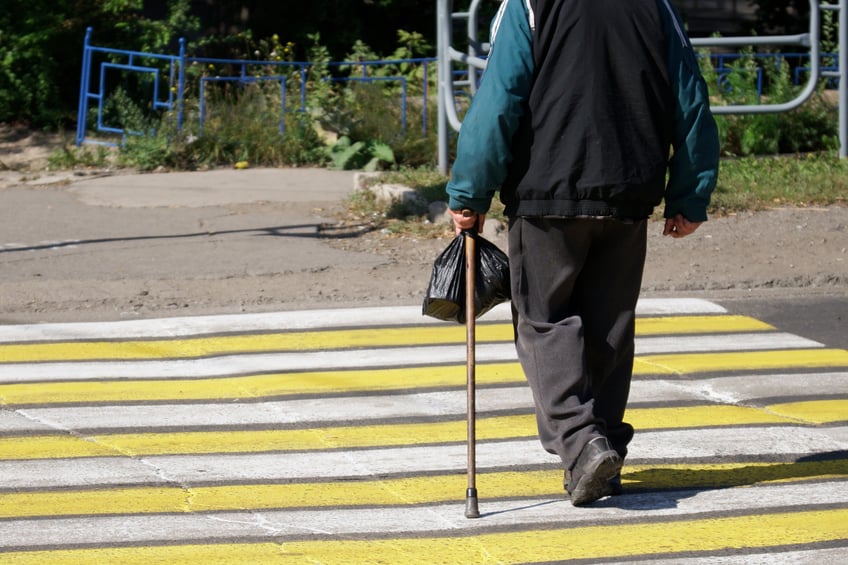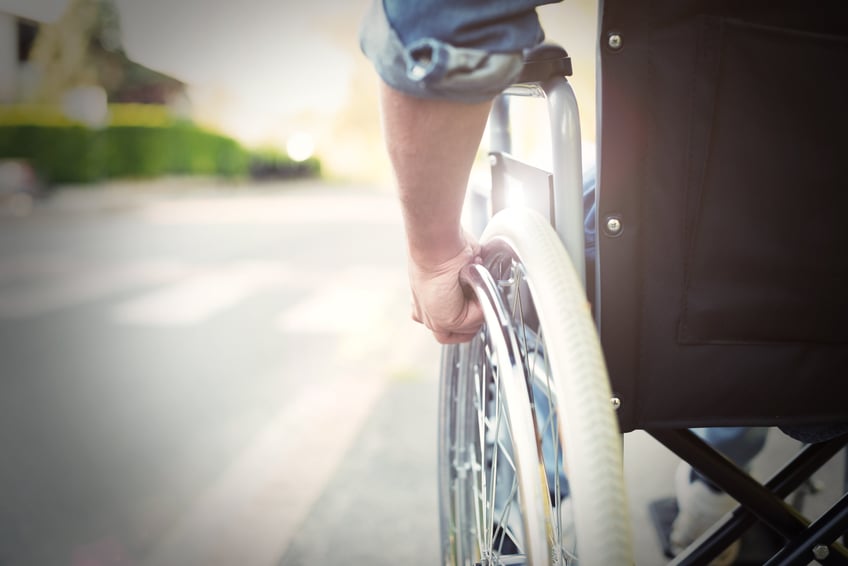About This Information.
This comprehensive guide has been developed by iseekplant to assist senior citizens, disabled adults, and their caregivers with construction site safety. The following information will outline the best safety practices to navigate around construction sites and hazards to keep an eye out for. It has been broken up into two sections for your convenience:
Find safety gear for site access
- Section 1 - How to Safely Get Around Construction Sites on Foot
- Section 2 - How to Safely Navigate Construction Sites in a Wheelchair
Construction site safety is critical in Australia, no matter who you are.
Construction sites can be incredibly dangerous places if you aren’t trained in safe work practices. And although safety measures have never been better, from 2008 to 2013 there were 182 fatalities and 63,230 serious injuries across Australia as a result of construction site incidents.
Some of the most vulnerable individuals to injuries around construction sites are pedestrians. Sadly, the likelihood that seniors or disabled individuals will be injured around construction sites is increased due to impairments such as vision or hearing loss, or a mobility issue that makes navigating potentially hazardous conditions that much more difficult.
Unfortunately, injuries in this industry may never be fully avoidable. However, there are a number of preventative measures that workers and pedestrians alike can take to decrease the possibility of accidents around construction sites. Check out iseekplant’s comprehensive guide to site safety below.

Section 1 - How to Safely Get Around Construction Sites on Foot
The biggest risk for pedestrians on foot includes being hit by a construction device, a falling object, and slips and falls. Follow the below guidelines to safely walk around construction sites in Australia.
Always Keep Your Distance
A great first step in avoiding construction site injuries is to avoid the area altogether. Falling debris like tools, nails, construction materials or scaffolding can be very real hazards to pedestrians travelling near a construction site. Maintaining the greatest possible distance to the area is just about a surefire way to avoid any head knocks.
Stay Outside of Temporary Safety Barriers
A lot of construction sites that pedestrians encounter in Australia are located in a city or residential area. Temporary barriers like fences are used extensively across the country in an effort to expand the distance between bystanders and possible falling debris. Warning signs should be posted along these fences to communicate that the sidewalk is closed or the construction site shouldn’t be entered.
It’s crucial to never avoid crowds or cut corners by walking inside these barriers. The risks of these sites are drastically increased for individuals with limited vision or mobility when uneven surfaces, construction debris, or even dangerous holes caused by excavations or trenches are present.
Stay Inside of Channelising Devices
Crash-worthy barriers and channelising devices such as traffic cones, tubular markers, drums and meridians are frequently found throughout Aussie construction sites in addition to temporary fences. If you spot these devices, do not attempt to enter the road with traffic to avoid pedestrians or cut down your commute time.
Be Aware of the Risks of Falling Objects
Debris falling from heights can cause serious harm to pedestrians. It’s important to understand the dangers of falling objects and what to look for when you’re passing overhead construction sites. If you have a hearing impairment, make sure you look all around you, including up, as you walk through a construction site. Those with visual or mobility impairments should take the same precautions, or seek an alternate route if available.
Keep an Eye Out for Uneven Surfaces
Occasionally, road construction projects will require the re-routing of pedestrian traffic. Detour pathways are frequently constructed that require pedestrians to walk on uneven surfaces. These areas pose a threat to visually impaired individuals as it becomes more difficult to detect the constant changes in the ground.
Be Aware of Slippery Surfaces
Another thing to keep in mind when you’re walking around construction sites is slippery surfaces. Whether it’s a result of rain impacting the area, water being spilled from the construction site or a particularly smooth surface, it’s crucial to keep an eye out to avoid falls. Most construction sites will have “slippery surface” warning signs in the presence of pipes or hoses.
Ensure Operators Can See You
Australian construction sites will frequently have a number of large vehicles and heavy earthmoving equipment being used including dozers, excavators, scrapers, forklifts and more. Always ensure the operator can see that you are passing by for your safety and theirs.
Look for Detectable Edging
Construction sites in Australia are required to have continuous edging that is easily detectable with a cane. This standard is crucial for the visually impaired to walk around temporary pathways and is instrumental in injury prevention. Always search for detectable edging when you’re walking around a construction site.

Section 2 - How to Safely Navigate Construction Sites in a Wheelchair
Australian laws stipulate that there must be adequate access around construction sites for individuals that are reliant upon wheelchairs. However, these access points don’t fully mitigate the risks that construction sites pose to pedestrians. Follow the tips below to decrease the likelihood of an incident.
Avoid Construction Debris
Unfortunately, excess debris and construction waste around sites in Australia can harm pedestrians quite easily. It’s important to stay vigilant when near any site, especially if you’re reliant upon a wheelchair. Disorganised construction sites whose workers neglect to dump their building materials into a skip bin are a real issue, so be sure to keep an eye out for any hazardous objects the next time you’re near a site.
Look Out for Slippery and Uneven Surfaces
As we mentioned earlier in the article, uneven and slippery surfaces can result in injuries. Those who utilise wheelchairs should understand the limitations of their mobility assistance device. If you’re not sure how your wheelchair is going to fair on the surface, it’s best to avoid it altogether.


